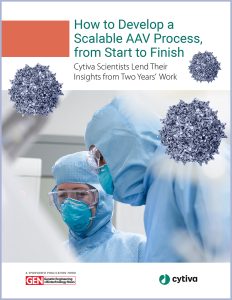Viral vectors are an integral delivery vehicle in modern medicine and are used in everything from oncolytic viruses to vaccines and gene therapies. With two gene therapies approved by regulatory agencies in 2021 and more in 2022, these therapies are delivering on their promise despite concerns on dosing and safety. Eyes were the first targets; there is growing interest in potential indications for targets in the central nervous system (CNS), liver, and muscles. Of the viral vectors used in gene therapy, adeno-associated virus (AAV) has emerged as the frontrunner
In 2021, there were more than 300 gene therapies in clinical trials, about half using AAV. This virus is a versatile tool, with serotypes that target specific tissue types. This fact, combined with the prevalence of engineered variants, creates an almost boundless array of choices. On the flip side of this versatility is the challenge: How do we find ways to produce the various serotypes with high efficiency, sufficient to generate many doses of therapy?
Can we learn from monoclonal antibodies (mAbs), which use platform approaches to make grams of material? How do we achieve something similar for AAV? First off, we can’t expect similar outputs for a burgeoning field. With mAbs, it took decades to get such high titers upstream that downstream became a bottleneck. And decades to achieve high recoveries following purification. But what we can do is learn more quickly than we did with mAbs to get better and better. This will take a combination of grit, perseverance, and innovation.
AAV is not a mAb. It’s five times larger and is packaged into capsids, which can contain all of the necessary genetic information, partial, or no genetic information. A main challenge upstream is getting a high percentage of full capsids in the harvest. Downstream, it’s effectively separating the full capsids from empties that will reduce efficacy and potentially provoke an immune response.
We don’t have all the answers, but we have made progress both upstream and downstream. And we learned a lot of lessons along the way.
We believe in the promise of gene therapy, and if you’re reading this you do, too. We hope you find inspiration in the articles in this eBook, so you can bring your own therapy to life.
Here we present highlights from a process that has been developed – and continues to be refined – with help from nearly two dozen Cytiva scientists. We frame these highlights around common challenges we hear from those who are developing and producing AAV.
Sponsored by:



